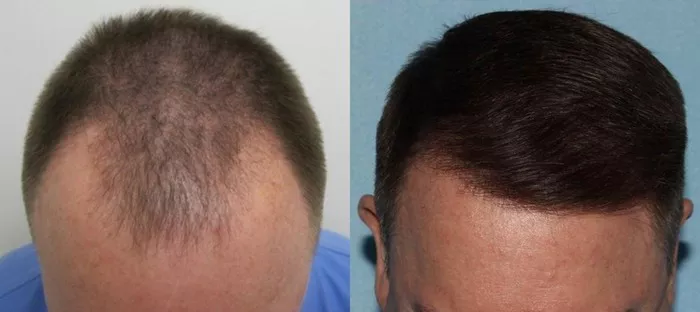Deciding to undergo a hair transplant is a significant step towards restoring your confidence and achieving a fuller head of hair. One of the key considerations in this process is determining the number of grafts required for your specific needs. In this comprehensive guide, we will explore the factors that influence the number of grafts you’ll need, helping you make an informed decision and understand the process better.
1. The Role of Grafts in Hair Transplants
Before delving into the specific numbers, let’s first understand what grafts are and why they are essential in hair transplant procedures:
a. What Are Grafts?: Grafts are tiny clusters of hair follicles removed from a donor area (usually the back or sides of the scalp) and transplanted to areas with hair loss.
b. Density Matters: Grafts determine the density of your newly transplanted hair, and the number of grafts needed directly influences the final outcome.
2. Factors Influencing the Number of Grafts
The number of grafts required for a hair transplant varies from person to person and depends on several key factors:
a. Degree of Baldness: The extent of your hair loss plays a significant role. Those with minimal hair loss require fewer grafts than those with more extensive baldness.
b. Desired Hair Density: Your preference for hair density and thickness in the transplant area will determine the number of grafts needed.
c. Donor Area Quality: The density and quality of hair in your donor area will impact the number of available grafts. A healthy donor area allows for more grafts.
d. Transplant Technique: The choice of transplantation technique, such as FUE (Follicular Unit Extraction) or FUT (Follicular Unit Transplantation), can affect the number of grafts required.
3. Determining Graft Numbers for Different Areas
The number of grafts required can differ for specific areas of the scalp, including the hairline, mid-scalp, and crown:
a. Hairline: Achieving a natural-looking hairline typically requires a conservative number of grafts, focusing on creating an age-appropriate appearance.
b. Mid-Scalp: The mid-scalp area might require a moderate number of grafts to address moderate hair loss effectively.
c. Crown: The crown area often necessitates a higher number of grafts to provide full coverage and density.
4. Recommendations for Graft Numbers
While it’s challenging to provide an exact number of grafts without a professional evaluation, here are some general guidelines:
a. Minor Hair Loss: For mild hair loss, you may need around 500 to 1,000 grafts to achieve a natural appearance.
b. Moderate Hair Loss: Moderate hair loss might require 1,000 to 2,500 grafts to restore a fuller look.
c. Extensive Hair Loss: Those with extensive hair loss could require 2,500 to 4,000 or more grafts for comprehensive coverage.
d. Multiple Sessions: In cases of severe hair loss, multiple sessions may be necessary to achieve optimal results.
5. The Importance of Consultation with a Specialist
To determine the exact number of grafts needed for your hair transplant, consulting with a board-certified hair restoration specialist is essential. They will conduct a thorough assessment of your hair loss, examine your donor area, and discuss your aesthetic goals.
a. Personalized Evaluation: Every individual’s needs are unique, and a personalized evaluation is crucial to tailor the procedure accordingly.
b. Realistic Expectations: A specialist will help you set realistic expectations based on the number of grafts required to achieve your desired look.
c. Procedure Planning: They will create a detailed plan for your hair transplant, ensuring the right number of grafts are used to achieve the best results.
6. The Final Result and Ongoing Care
Once you’ve undergone the hair transplant procedure and the grafts have been successfully transplanted, it’s important to follow post-operative care instructions to ensure optimal results. Your hair will go through a growth cycle, with full results typically visible within 12 to 18 months.
a. Post-Operative Care: Adhering to post-operative care instructions, including gentle shampooing and avoiding strenuous activities, is essential.
b. Patience Is Key: Be patient as your transplanted hair begins to grow. It may take several months for the full results to become apparent.
c. Maintenance: Even after the hair transplant, ongoing maintenance and proper hair care are essential to maintain your new, fuller hair.
See Also: [Revealed!] How Long to Avoid Sunburn After Hair Transplant?
In conclusion
Determining the number of grafts needed for your hair transplant is a complex process that depends on various factors, including the extent of your hair loss, your desired hair density, and the quality of your donor area. To get an accurate assessment, consult with a qualified hair restoration specialist who can create a personalized plan to achieve the best possible results. Remember, the path to a fuller head of hair begins with informed decisions and professional guidance.


